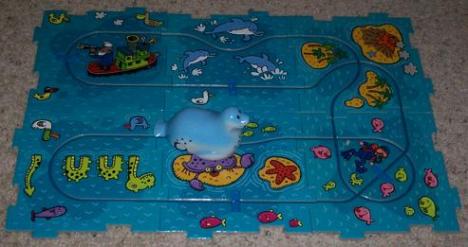Carnival of Maths #58
Welcome to the 58th Carnival of Maths – the late edition! I should have published this a couple of days ago but work and life commitments got in the way and I have only now found time to put it together. So, working on the assumption that late is better than never let’s get on with the show.
Whenever I discuss mathematics on this blog I often focus on using technology and so naturally I turned to technology to help me answer the traditional carnival question ‘What is interesting about the number n?‘ – where n is the edition number of the carnival being hosted. So, let’s see what I can find out about the number 58 using the best technology the web can offer.
The Number Gossip website informs me that 58 is the smallest Smith number (in base 10) with a prime sum of digits. In addition (and more mundanely), 58 is also composite, deficient, even, evil and square free. Wolfram Alpha also has a lot to say about the number 58 such as the fact that it is an idoneal number and that it can be expressed as the sum of two squares: 58= 32 + 72. Wolfram Alpha doesn’t finish there though since it also gives a wealth of other trivia about 58 such as how it can be written in binary, Roman Numerals, Greek, Babylonian and Mayan. It tells us that its prime factorisation is 2*29, that 58 is the ASCII code for a colon along with the set of quadratic residues modulo 58. Finally, it finishes off by telling us that
![]()
is a near integer. A spot of googling helps me discover that 58 is the sum of the first seven prime numbers (2+3+5+7+11+13+17=58) and is also the sum of the totient function for the first thirteen integers . Hmmm, fascinating! However, enough of the number trivia and on with the show.
First up, we have a post from Jason Dyer of Number Warrior where he analyses one of his baby daughter’s favourite toys. That’s right ladies and gentlemen, only 6 months old and already inspiring mathematics.

Brent Yorgey, of Math Less Travelled fame submits the post Challenge #12, Part II, where he discusses counting “hyperbinary” representations (like binary representations, but allowing up to two copies of each power of two instead of just one). If you thought this carnival was late then you ain’t seen nothing yet ;)
Pat Ballew, author of the aptly titled Pat’s blog, sent in two related submissions for this edition of the carnival. First up is a post about a problem and its solution in ‘problems from the land down under‘ (I don’t know about you but I can’t read that title without thinking of a certain song from the 80’s). Pat worked on making the solution to this particular problem more understandable and, with a little help from his friends, he came up with a graphical solution.
The next submission comes from the blog Math with my kids where the writer asks some questions about sequences of rational numbers. He knows the answers to four of the questions but the fifth question is open as far as he knows.
Moving over to The Endeavour, we have two related submissions from John D Cook all about The Mercator Projection and its inverse.

Finally, we have a submission from Paul Brabban who’s non-mathmo fiancee asked him ‘Why is a minus times a minus equal to a plus?’ How would you answer this question if asked?
And that’s pretty much it for this edition of the carnival – or at least I think it is. I had to pull two of these submissions out of my spam bin so it seems that the filter has been a bit over-zealous recently. I have published everything that was submitted to me so if you submitted something and it is not in this post then you have fallen foul of the spam filter gremlins. If you let me know via a comment to this post in the next few days then I’ll fix the situation.
Thanks to everyone who submitted.

I wish I knew why the function f(n) = exp(pi sqrt(n)) sometimes very nearly returns integers. You mentioned f(58) and I’d just read about f(163) yesterday. (f(163) comes within 10^-12 of being an integer.) This article gives a connection between 58 and 163 and why they produce near integers, but I don’t understand it.